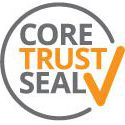- Submit data
- Submission guidelines
- General guide
General guide to data submission
Data delivery mechanisms
The following delivery choices are available (in order of our preference)
1. By email to the relevant project manager for those projects with agreed Data Management Plans, or the BODC Enquiries Officer.
2. Data can be uploaded to a OneDrive folder set up by project managers.
3. Data can be left on an accessible ftp site, institutional Dropbox or any other appropriate facility for BODC staff to collect. Please provide collection details to BODC.
Data file format and file naming
BODC ask that you submit your data in non-proprietary formats wherever possible to aid in future-proofing your data. However, if this is not possible, then BODC can handle data in virtually any format, providing that software to read it is readily available or that it is described in sufficient detail for us to write the software. In all cases, we require an explanation of how the format has been used so that we can understand what we have been given. Statistical information, such as a list of file names supplied and their sizes or even the range of values for each parameter will help us ingest your data correctly.
As we use UNIX systems, we would appreciate it if filenames did not include embedded blanks. Please replace these with underscores (e.g. 'my_file' instead of 'my file').
Parameter descriptions
Please pay particular attention to providing us with clear descriptions of the parameters that you have sent to us, including clear column headings and the units used. Indicate which parameters are directly measured and which are derived from a combination of measurements. For derived measurements, please include the formulae used by leaving them in an Microsoft Excel spreadsheet cell, including them in an accompanying document or providing a literature reference.
Accompanying metadata
BODC endeavour to incorporate all data submitted into the relational database systems for the purpose of long term viability and future access. This requires the data set to be accompanied by key data set information (metadata). Detailed metadata collation guidelines for specific types of data are either available or under development to assist those involved in the collection, processing, quality control and exchange of those data types.
A summary checklist is provided below. For all types of data we require information about:
- Where the data were collected: location (preferably as latitude and longitude) and depth/height
- When the data were collected (date and time in UTC or clearly specified local time zone)
- How the data were collected (e.g. sampling methods, instrument types, analytical techniques)
- How you refer to the data (e.g. station numbers, cast numbers)
- Who collected the data, including name and institution of the data originator(s) and the principal investigator
- What has been done to the data (e.g. details of processing and calibrations applied, algorithms used to compute derived parameters)
- Watch points for other users of the data (e.g. problems encountered and comments on data quality)
This information should be supplied within the metadata submission template wherever possible, however it may be supplied in any standard document format (e.g. Microsoft Word or text) and will be incorporated into either specific metadata fields in our database or as comments in the documentation we will prepare to accompany your data.
Further information on specific metadata required can be found through the MEDIN Data Guidelines and Ocean Best Practices.


